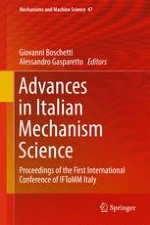2017 | OriginalPaper | Chapter
Braking Energy Recovery in High Speed Trains: An Innovative Model
Authors : Amedeo Frilli, Enrico Meli, Daniele Nocciolini, Simone Panconi, Luca Pugi, Andrea Rindi
Published in: Advances in Italian Mechanism Science
Publisher: Springer International Publishing
Activate our intelligent search to find suitable subject content or patents.
Select sections of text to find matching patents with Artificial Intelligence. powered by
Select sections of text to find additional relevant content using AI-assisted search. powered by
